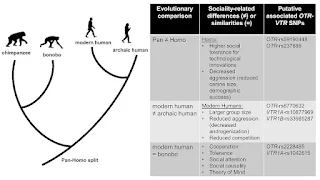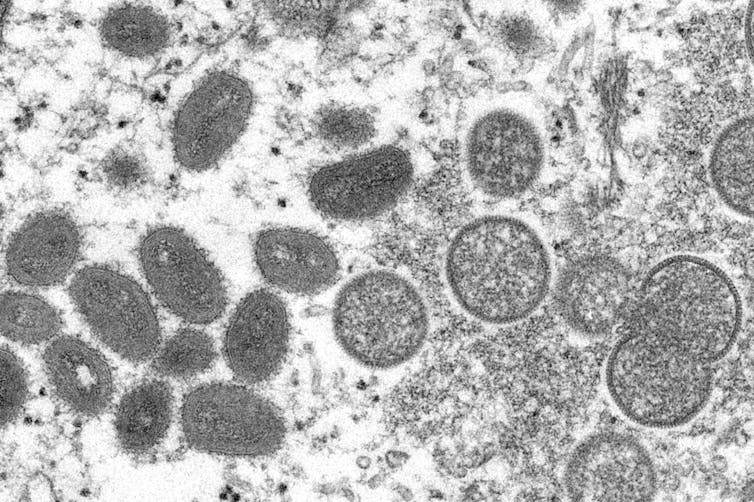
According to research just published, open access, in the British Medical Journal (BMJ), Americans living in Republican-voting counties have a higher mortality rate than Americans living in Democrat-voting counties and this difference is widening. These are the findings of investigators from Brigham and Women’s Hospital, Boston, MA, USA, led by assistant professor, Haider Warraich, MD, of the Division of Cardiovascular Medicine, who, according to the BWH press release:
…found what they call a “mortality gap” — a widening difference between age-adjusted death rates in counties that had voted for a Democrat or a Republican in previous presidential and governor elections. The team found that mortality rates decreased by 22 percent in Democratic counties but by only 11 percent in Republican counties. The mortality gap rose across top disease areas, including heart disease and cancer, and the mortality gap between white residents in Democratic versus Republican counties increased nearly fourfold during the study period.The press release goes on to say:
Warraich and colleagues used data from the Wide-ranging OnLine Data for Epidemiologic Research (CDC WONDER) database and the MIT (Massachusetts Institute of Technology) Election Data and Science Laboratory. They classified counties as Democratic or Republican based on the way the county had voted in the previous presidential election and adjusted for age when calculating mortality rates.In an ideal world, politics and health would be independent of each other and it wouldn’t matter whether one lives in an area that voted for one party or another, but that is no longer the case. From our data, we can see that the risk of premature death is higher for people living in a county that voted Republican.
Our study suggests that the mortality gap is a modern phenomenon, not an inevitability. At the start of our study, we saw little difference in mortality rates in Democratic and Republican counties. We hope that our findings will open people’s eyes and show the real effect that politics and health policy can have on people’s lives.
Assistant professor Haider Warraich, MD, lead author
Division of Cardiovascular Medicine
Brigham and Women’s Hospital, Boston, MA, USA
Overall, the team found that mortality rates in Democratic counties dropped from 850 deaths per 100,000 people to 664 (22 percent), but in Republican counties, mortality rates declined from 867 to 771 (11 percent). When the team analyzed by race, they found that there was little gap between the improvements in mortality rates that Black and Hispanic Americans experienced in Democratic and Republican counties. But among white Americans, the gap between people living in Democratic versus Republican counties was substantial.
The mortality gap remained consistent when the researchers looked only at counties that had voted Republican or Democratic in every presidential election year studied and when they looked at gubernatorial elections. Democratic counties experienced greater reductions in mortality rates across most common causes of death, including heart disease, cancer, chronic lower respiratory tract diseases, diabetes, influenza and pneumonia, and kidney disease.
The authors note that the widening gap in death rates may reflect the influence of politics on health policies. One of the inflection points detected in the study corresponds to the Affordable Care Act (ACA), which was passed in 2010. More Democratic states than Republican states adopted Medicaid expansion under the ACA, which expanded health insurance coverage to people on a low income.
The study detects an association between political environment and mortality but does not definitively determine the direction of the association or the specific factors that may explain the link between the two. The authors did not study the effect of flipping political environments — that is, counties that switched from voting Democratic or Republican to voting for the other party — on health outcomes, which could be an area of future study. The study period ended in 2019, before the start of the COVID-19 pandemic, which may have had an even more profound impact on the mortality gap.






On every measure, Americans living in red counties fare worse that those living in blue counties and the authors point out the study period ended in 2019 before the COVID-19 pandemic. They also point out that one of the inflections on the charts during which the health of those in Democrat counties improved more than the health of those in Republican counties coincided with President Obama's, Affordable Care Act, which was implemented disproportionately in Democrat counties and improved the health of poor people.
As these figures show, the Republicans who campaigned against 'Obama Care' were in effect campaigning against improving the health of their own supporters!
It will be interesting to see what happened during the later stages of the COVID-19 pandemic after vaccinations against the virus had become widely available, and especially during the omicron variant wave, when most Democrat voters had been vaccinated and were observing sensible precautions, and, following the disastrously incompetent lead of Donald Trump and his allies on the extreme political right, and in the white supremacist evangelical Christian churches, many covidiot Republicans failed to get vaccinated and refused to wear face-coverings or observe social distancing because they had all become seen as anti-Trump statements!
This deliberate division of American into partisan camps, for what Trump and his allies thought would be to their political advantage, resulted in hospital admissions and deaths from COVID-19 being disproportionately of Republican antivaxxer covidiots in what some commentators likened to a self-inflicted genocide of fundamentalist, covidiot Trumpanzees. Probably the first time in the history of democracy that a political party has actively pursued policies that seem designed to kill their own supporters and their supporters trotted dutifully along like lambs to the slaughter led by Judas sheep, and yet only a tiny handful of Republican politicians had the decency to back out of the rabbit hole they had dived into and take the poitical risk of admitting they were wrong.
The teams finding are published, open access, in the BMJ:
AbstractI would suggest to my American readers in particular, that a party which is actively and knowingly pursuing policies designed to make their people sicker with a lower life expectancy, is a party which should never be trusted with the power to implement those policies at any level of government.
Objective To assess recent trends in age adjusted mortality rates (AAMRs) in the United States based on county level presidential voting patterns.
Design Cross sectional study.
Setting USA, 2001-19.
Participants 99.8% of the US population.
Main outcome measures AAMR per 100 000 population and average annual percentage change (APC).
Methods The Centers for Disease Control and Prevention WONDER database was linked to county level data on US presidential elections. County political environment was classified as either Democratic or Republican for the four years that followed a November presidential election. Additional sensitivity analyses analyzed AAMR trends for counties that voted only for one party throughout the study, and county level gubernatorial election results and state level AAMR trends. Joinpoint analysis was used to assess for an inflection point in APC trends.
Results The study period covered five presidential elections from 2000 to 2019. From 2001 to 2019, the AAMR per 100 000 population decreased by 22% in Democratic counties, from 850.3 to 664.0 (average APC −1.4%, 95% confidence interval −1.5% to −1.2%), but by only 11% in Republican counties, from 867.0 to 771.1 (average APC −0.7%, −0.9% to −0.5%). The gap in AAMR between Democratic and Republican counties therefore widened from 16.7 (95% confidence interval 16.6 to 16.8) to 107.1 (106.5 to 107.7). Statistically significant inflection points in APC occurred for Democratic counties between periods 2001-09 (APC −2.1%, −2.3% to −1.9%) and 2009-19 (APC −0.8%, −1.0% to −0.6%). For Republican counties between 2001 and 2008 the APC was −1.4% (−1.8% to −1.0%), slowing to near zero between 2008 and 2019 (APC −0.2%, −0.4% to 0.0%). Male and female residents of Democratic counties experienced both lower AAMR and twice the relative decrease in AAMR than did those in Republican counties. Black Americans experienced largely similar improvement in AAMR in both Democratic and Republican counties. However, the AAMR gap between white residents in Democratic versus Republican counties increased fourfold, from 24.7 (95% confidence interval 24.6 to 24.8) to 101.3 (101.0 to 101.6). Rural Republican counties experienced the highest AAMR and the least improvement. All trends were similar when comparing counties that did not switch political environment throughout the period and when gubernatorial election results were used. The greatest contributors to the widening AAMR gap between Republican and Democratic counties were heart disease (difference in AAMRs 27.6), cancer (17.3), and chronic lower respiratory tract diseases (8.3), followed by unintentional injuries (3.3) and suicide (3.0).
Conclusion The mortality gap in Republican voting counties compared with Democratic voting counties has grown over time, especially for white populations, and that gap began to widen after 2008.
Warraich H J, Kumar P, Nasir K, Joynt Maddox K E, Wadhera R K.
Political environment and mortality rates in the United States, 2001-19: population based cross sectional analysis
BMJ 2022; 377 :e069308 doi:10.1136/bmj-2021-069308
Copyright: © 2022 The authors. Published by BMJ Publishing Group Ltd.
Open access
Reprinted under a Creative Commons Attribution 4.0 International license (CC BY 4.0)



























